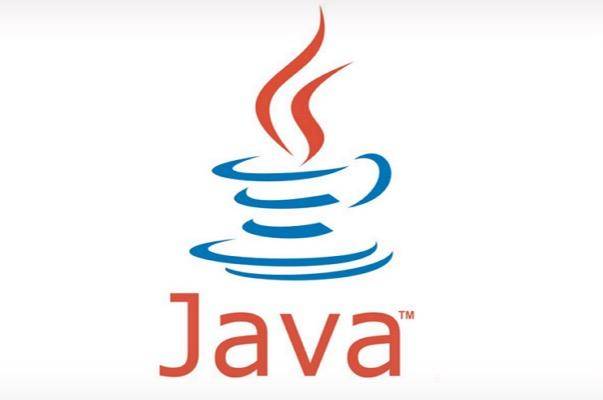问题
多线程编程里面一个常见的问题:“如何让主线程在全部子线程执行完毕后再继续执行?”
方案
方法一:主线程sleep
主线程等待子线程执行完最简单的方式当然是在主线程中Sleep一段时间,这种方式最简单,我们先看下实现
private static class MyThread extends Thread {
@Override
public void run() {
try {
Thread.sleep(1000);
} catch (InterruptedException e) {
e.printStackTrace();
}
System.out.println(String.format("%s %s was finished", DateUtils.format(new Date(), "hh:mm:ss:SSS"), getName()));
}
}
public static void main(String[] args) {
System.out.println(String.format("%s I was main and I'm started", DateUtils.format(new Date(), "hh:mm:ss:SSS")));
for (int i = 0; i < 10; i++) {
MyThread myThread = new MyThread();
myThread.start();
}
try {
Thread.sleep(3000);
} catch (InterruptedException e) {
e.printStackTrace();
}
System.out.println(String.format("%s I was main and I'm finished", DateUtils.format(new Date(), "hh:mm:ss:SSS")));
}
但这种方式有个非常大的弊端:无法准确地预估全部子线程执行完毕的时间。时间太久,主线程就需要空等;时间太短,子线程又可能没有全部执行完毕。
方法二:子线程join
那么另外一种方式就是使用线程的Join()方法来实现主线程的等候,我们还是先来看下实现代码
//此处省略MyThread代码,同上
public static void main(String[] args) {
System.out.println(String.format("%s I was main and I'm started", DateUtils.format(new Date(), "hh:mm:ss:SSS")));
List<Thread> threads = new ArrayList<>();
for (int i = 0; i < 10; i++) {
MyThread myThread = new MyThread();
myThread.start();
threads.add(myThread);
}
for (Thread thread : threads) {
try {
thread.join();
} catch (InterruptedException e) {
e.printStackTrace();
}
}
System.out.println(String.format("%s I was main and I'm finished", DateUtils.format(new Date(), "hh:mm:ss:SSS")));
}
可以看到我们在全部子线程开始执行后,又在主线程中执行全部子线程的join方法,那么主线程会等待全部子线程执行完毕后继续往下执行。这里放上Java 7 Concurrency Cookbook对join方法的定义,个人认为比JDK中定义更准确。
join() method suspends the execution of the calling thread until the object called finishes its execution.
我们看下join方法的源码
public final void join() throws InterruptedException {
join(0);
}
public final synchronized void join(long millis)
throws InterruptedException {
long base = System.currentTimeMillis();
long now = 0;
if (millis < 0) {
throw new IllegalArgumentException("timeout value is negative");
}
if (millis == 0) {
while (isAlive()) {
wait(0);
}
} else {
while (isAlive()) {
long delay = millis - now;
if (delay <= 0) {
break;
}
wait(delay);
now = System.currentTimeMillis() - base;
}
}
}
可以看到,如果join的参数为0,那么主线程会一直判断自己是否存活,如果主线程存活,则调用主线程的wait()方法,那么我们继续看下wait方法的定义
/**
* Causes the current thread to wait until either another thread invokes the
* {@link java.lang.Object#notify()} method or the
* {@link java.lang.Object#notifyAll()} method for this object, or a
* specified amount of time has elapsed.
*/
public final native void wait(long timeout) throws InterruptedException;
大概意思是说wait(0)会使主线程进入睡眠状态,直到调用join方法的线程(简称t线程,下同)执行完毕后调用notify()或notifyAll()将其唤醒。注意这个地方有几点需要特别说明:
1. 代码中没有显示调用notify或notifyAll的地方,这个唤醒操作其实是由于Java虚拟机在线程执行完毕后所做的
2. 主线程需要获得t线程的对象锁(wait 意味着拿到该对象的锁),然后进入睡眠状态
3. 由于每个子线程都执行了join方法,所以主线程需要等待全部子线程执行完毕后才能被唤醒
方法三:使用CountDownLatch
另外我们还可以使用java.util.concurrent包里的CountDownLatch,初始设置和子线程个数相同的计数器,子线程执行完毕后计数器减1,直到全部子线程执行完毕。注意countDownLatch不可能重新初始化或者修改CountDownLatch对象内部计数器的值,一个线程调用countdown方法happen-before另外一个线程调用await方法
private static CountDownLatch latch = new CountDownLatch(10);
public static void main(String[] args) {
System.out.println(String.format("%s I was main and I'm started", DateUtils.format(new Date(), "hh:mm:ss:SSS")));
for (int i = 0; i < 10; i++) {
MyThread myThread = new MyThread();
myThread.start();
}
try {
latch.await();
} catch (InterruptedException e) {
e.printStackTrace();
}
System.out.println(String.format("%s I was main and I'm finished", DateUtils.format(new Date(), "hh:mm:ss:SSS")));
}
方法四:使用CycleBarrier
另外还可以使用CycleBarrier实现主线程等待。CyclicBarrier 的字面意思是可循环使用(Cyclic)的屏障(Barrier)。它要做的事情是,让一组线程到达一个屏障(也可以叫同步点)时被阻塞,直到最后一个线程到达屏障时,屏障才会开门,所有被屏障拦截的线程才会继续干活。CyclicBarrier默认的构造方法是CyclicBarrier(int parties),其参数表示屏障拦截的线程数量,每个线程调用await方法告诉CyclicBarrier我已经到达了屏障,然后当前线程被阻塞。
private static CyclicBarrier cyclicBarrier = new CyclicBarrier(10);
private static class MyThread extends Thread {
@Override
public void run() {
try {
Thread.sleep(1000);
} catch (InterruptedException e) {
e.printStackTrace();
}
System.out.println(String.format("%s %s was finished", DateUtils.format(new Date(), "hh:mm:ss:SSS"), getName()));
try {
cyclicBarrier.await();
} catch (InterruptedException e) {
e.printStackTrace();
} catch (BrokenBarrierException e) {
e.printStackTrace();
}
}
}
public static void main(String[] args) throws BrokenBarrierException {
System.out.println(String.format("%s I was main and I'm started", DateUtils.format(new Date(), "hh:mm:ss:SSS")));
for (int i = 0; i < 10; i++) {
MyThread myThread = new MyThread();
myThread.start();
}
try {
cyclicBarrier.await();
} catch (InterruptedException e) {
e.printStackTrace();
}
System.out.println(String.format("%s I was main and I'm finished", DateUtils.format(new Date(), "hh:mm:ss:SSS")));
}
看完方法三和方法四,有人就要问了:“CountDownLatch和CyclicBarrier都能够实现线程之间的等待,这两种方式有什么区别”。别急,下面就来讲下他们的区别
- CountDownLatch一般用于某个线程A等待若干个其他线程执行完任务之后,它才执行,而CyclicBarrier一般用于一组线程互相等待至某个状态,然后这一组线程再同时执行;
- CountDownLatch是不能够重用的,而CyclicBarrier是可以重用的(reset)。
执行结果
由于四种方式的执行结果大同小异,我们这里就放出两种同步和异步的执行结果


